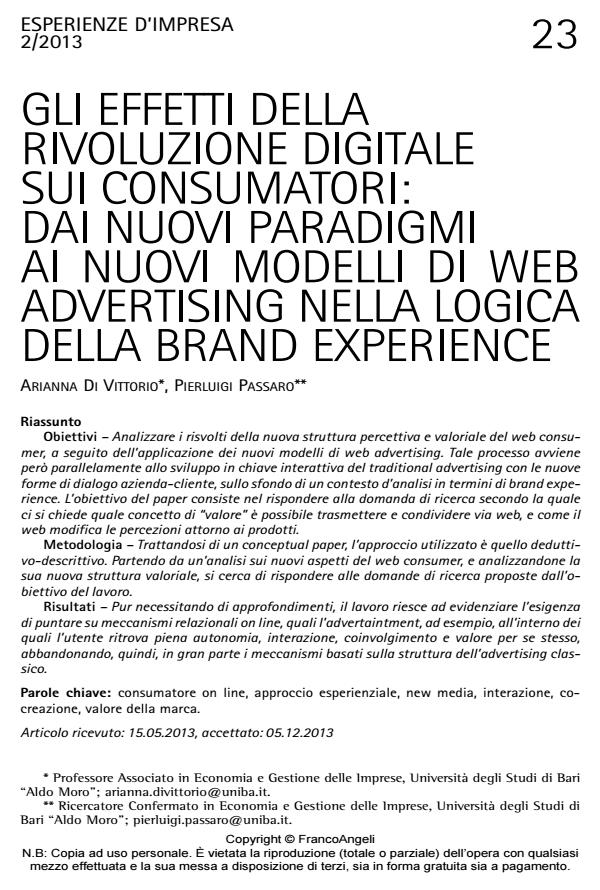The effects of the digital revolution on consumers: new paradigms and new Models of web advertising in the logic of web experience
Journal title ESPERIENZE D'IMPRESA
Author/s Arianna Di Vittorio, Pierluigi Passaro
Publishing Year 2014 Issue 2013/2
Language Italian Pages 19 P. 23-41 File size 985 KB
DOI 10.3280/EI2013-002002
DOI is like a bar code for intellectual property: to have more infomation
click here
Below, you can see the article first page
If you want to buy this article in PDF format, you can do it, following the instructions to buy download credits

FrancoAngeli is member of Publishers International Linking Association, Inc (PILA), a not-for-profit association which run the CrossRef service enabling links to and from online scholarly content.
Analyze the implications of the new structure and value of the perceptual web consumer, following the application of the new models of web advertising. This process takes place, however, in parallel with the development of interactive key traditional advertising with new forms of dialogue between company and customer, against the backdrop of a framework for analysis in terms of brand experience. The objective of this paper is to answer the research question to the effect that one wonders what the concept of "value" can transmit and share via the web, and how the web changes the perceptions around the products. Methodology - As a conceptual paper, the approach used is deductive-descriptive. Based on an analysis on the new aspects of the consumer Web, and analyzing the new structure of values , we try to answer the questions of the objective of the proposed research work. Results - Even if it requires further information, the work manages to highlight the need to focus on relational mechanisms for online advertaintment such as, for example, within which the user finds full autonomy, interaction, involvement and value for himself, then abandoning for the most part the mechanisms based on the structure of advertising classic.
Keywords: Web consumer, experiential approach, new media, interaction, co-creation, brand value
Arianna Di Vittorio, Pierluigi Passaro, Gli effetti della rivoluzione digitale sui consumatori: dai nuovi paradigmi ai nuovi modelli di web advertising nella logica della brand experience in "ESPERIENZE D'IMPRESA" 2/2013, pp 23-41, DOI: 10.3280/EI2013-002002